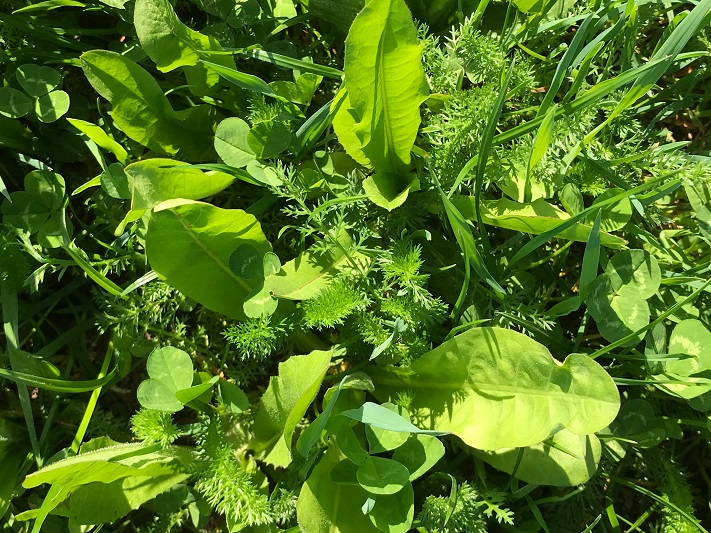Herbal leys drive grass-fed ram business
Herbal leys crucial for Shropshire sheep breeders
Although as a family the Hulme’s have been breeding rams for the past 65 years, the farm took a complete change in direction in 2006, creating the EasyRams business, based entirely on New Zealand genetics.
“We used to produce prize-winning Suffolk sheep, but we felt had to change to producing a more robust ram, that would quickly serve a large number of ewes, be long living and produce easily born lambs that thrive and finish easily off grass,” father Robyn Hulme explained.
 Hulme in the herbal ley 711x573.jpg) Donald Boyd with Nick and Robyn (right) Hulme in the herbal ley
Donald Boyd with Nick and Robyn (right) Hulme in the herbal ley
“We sold 15 rams in 2007 and 500 rams - lambs and yearlings in 2017, with 125 new customers last year.”
Eight hundred and fifty pure New Zealand ewes now lamb from the 1 April on the 265ha farm on variable but mainly light land. The lambs are weaned at 12 weeks of age and are never creep fed. They rotationally graze in groups of 250 behind electric fencing in two hectare blocks, moving to the next paddock after four to five days. They return to the grazed area three weeks later.
Herbal ley
Much of the grazing area has been put into a herbal ley - a variation of Landmark Extreme from Oliver Seeds, with added chicory, plantain and yarrow. It also contains a late perennial ryegrass, cocksfoot, timothy, meadow fescue and a significant proportion of festuloliums including Lofa, which are deep rooting and perform well in drought conditions. It also has a high white clover content.
“Getting the highest quality grazing grass into the lambs is critical,” says Robyn’s son, Nick Hulme. “Our challenge is to get them big enough to sell them as ram lambs by October.
“Last June and July was really dry – but with the wide range of plants growing in the mixture, there was still plenty of food to feed them.

Herbal ley at Pikesend Farm
“This mixture, and particularly the clover, which really kicks in in late summer is perfect for them. They like the diversity and the chicory helps keep worm counts low.”
The herbal ley was planted in spring 2016 as part of an HLS scheme and is expected to last for up to ten years. After a catch crop of stubble turnips and kale had been grazed, muck was applied before it was ploughed. The seed was sown at 16kg/acre through a combination drill and nitrogen at 37.5kg/ha was applied. It established quickly and lambs were grazing it in June.
“Essentially we can offer grass-fed rams that can help commercial sheep farmers produce high value meat lambs at minimum cost,” Robyn Hulme concludes.
This article originally appeared in Farmers Guardian on 4 May 2018.
